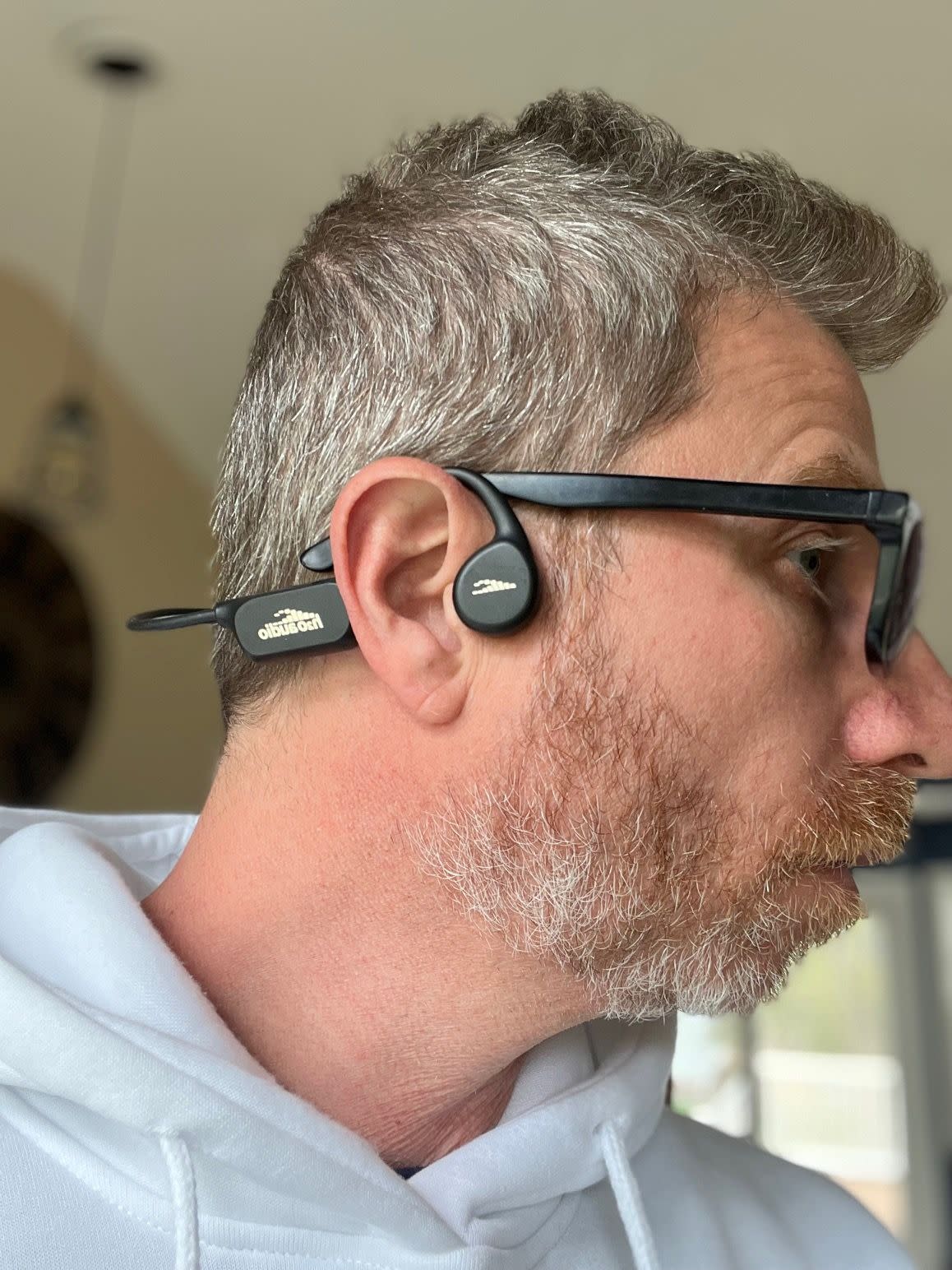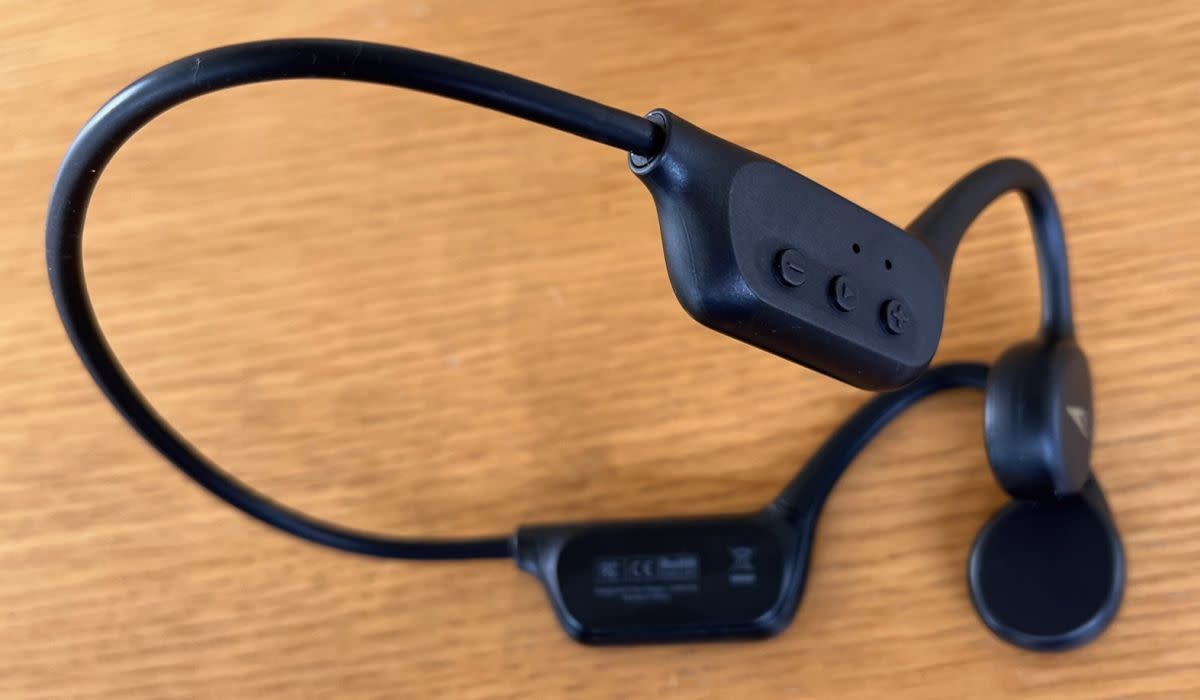H2O Audio Tri Pro Multi-Sport waterproof headphones review: I was in the pool!
I love swimming laps but find it incredibly boring. There's only so long I can be alone with my own thoughts. (Hmm ... maybe I'm boring?) Oh, to have my favorite playlist in the pool with me. Alas, AirPods aren't suitable for swimming. Few earbuds or headphones are, mostly because of that whole water thing. The H2O Audio Tri Pro headphones, however, can indeed work underwater, and they can also work independently of your phone (which is even more challenging to swim with). They're suitable for biking and running as well, but are they worth the $150 price tag? Here's my H2O Audio Tri Pro review.
You'll note from the photo that these don't look like over-the-ear headphones or wireless earbuds. Rather, these are bone-conduction earphones, meaning their tiny speakers sit next to your ears (instead of over or inside them).
So don't they sound ... tiny? Not at all. Bone conduction is pretty ingenious: Vibrations from the earpieces turn your jawbone — your entire skull, really — into a speaker. I won't say the audio quality rivals anything you'd get from proper headphones, but it's surprisingly decent and certainly good enough for vigorous activities like running and biking. (More about swimming below.)
Meanwhile, because your ears aren't covered or otherwise blocked, you can still hear outside sounds — conversation, traffic and so on. These are the opposite of noise-canceling; they're noise-permitting, which is sometimes desirable (and definitely safer because you're more aware of your surroundings).
Bluetooth headphone meets MP3 player
The lightweight, neckband-style Tri Pro has two basic modes of operation: Bluetooth and Memory. The former is pretty straightforward: Pair it with your phone, same as any wireless headphone, and play music or podcasts from your preferred source (Pandora, Spotify, etc.).
Memory Mode is where it gets interesting. The Tri Pro has 8GB of onboard storage, enough for a few hundred songs. If you have a digital music library (M4As, MP3s, WMAs, etc.), you can fill up the Tri Pro like you would an old-school MP3 player. But there's another option: A feature called Playlist+ lets you "record" music from just about any streaming service (such as Spotify) for offline listening.
That's the cool news. The not-so-cool news is that you can't just copy or download your favorite playlist and hit the road. Instead, Playlist+ literally performs a real-time recording, which is problematic in several ways. First, if you want to save, say, an hour's worth of music, you have wait an hour while the music plays through the headphones and gets saved to memory. To save four hours? Allow four hours. And so on.
Second, because the result is a straight, uninterrupted recording in one large audio file, you can't shuffle playback, skip tracks or the like. Arguably even worse, the first few seconds of the first song gets cut off because the app won't let you start recording until you start your playlist from another app. Similarly, the last song is likely to cut off as well when the recording timer ends. If a call comes in during the recording, the loading process will pause and then resume when the call is done, but then you'll end up with two split files. (To help work around this issue, H2O recommends doing the recording overnight, when calls are less likely, or pairing the headphones with a tablet or PC instead of a phone, at least for the recording process.)
It's too bad the Tri Pro doesn't work more like the Mighty Vibe, a little clip-on audio player that can absorb Amazon Music and Spotify playlists over Wi-Fi. That's a much faster and easier option, and it allows you to keep your playlist divided into individual tracks.
All this is to say that Playlist+ is pretty bad. Too many hoops to jump through, too poor the end result. That leaves the MP3 option, which has its merits — though I ran into trouble during my initial attempts at copying some albums. In the end I had to reset the headphones, which solved the problems but didn't make a great first impression.
Another consideration: While you can listen to podcasts or audiobooks streamed from an app, there's no easy way to download them to the headphones for offline listening — not without some hoop-jumping, which I suspect is beyond the reach (and patience level) of most users.
Tri Pro in the pool: All wet
All this hassle might be worth it if I could swim laps while enjoying my carefully curated workout playlist. Unfortunately, the Tri Pro failed miserably in my tests. After inserting the included pair of silicone ear plugs, I stood in the pool and pressed Play. The music was super muddy, not pleasant at all. Then I dipped my head underwater and — surprise! — the sound improved considerably. Just one problem: I don't live underwater; I have to breathe on occasion.
When I started to swim, either breaststroke or freestyle, I immediately discovered the fundamental flaw here: Any time an ear breaks the surface, the sound quality turns horrible. What's more, swimming is a noisy business, what with the breathing and splashing and all. You have to crank the volume, but then it's just one cacophony competing with another.
I tried again without the earplugs, and it was sort of the reverse problem: I could hear better above water but not as well below. Ultimately it didn't matter, because when you swim, you're constantly bobbing above and below the surface. It didn't take long before I was eager to ditch the headphones.
Should you buy the Tri Pro headphones?
I guess I'm going to have to be alone with my thoughts, at least in the lap pool. The H2O Audio Tri Pro headphones just don't work well for swimming, which means there's little point in bothering with the awkward, time-consuming Playlist+ feature. What you're left with then is a bone-conduction headphone that sounds pretty good and would indeed be welcome on a run or bike ride.
And if you load it up with MP3s or the like, you can leave your phone at home. Is that a desirable option? Not really, at least to me. I want my phone nearby for navigation, emergencies and a much larger assortment of listening options. A self-contained MP3 player you can wear on your head might have made sense 20 years ago, but I don't see the value today.


